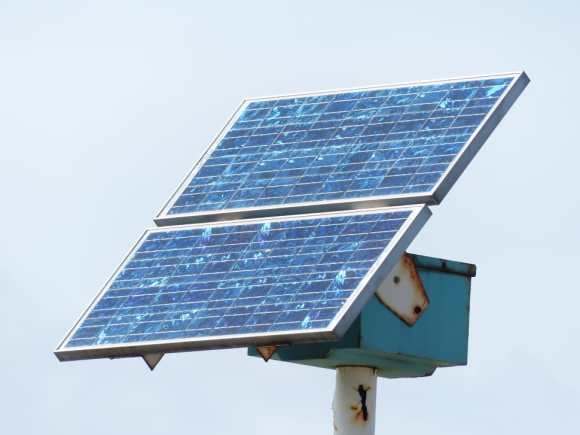In Scotland, significant progress has been made in renewable energy, highlighting its commitment to sustainability and innovation. There are four main points to consider: surpassing energy goals, tackling grid capacity issues, influencing renewable practices internationally, and managing economic and environmental changes.
Here, in this article we are going to talk about it more.
Exceeding Energy Expectations

The first remarkable achievement we’re discussing revolves around Scotland’s energy landscape in the year 2022. Instead of merely meeting its energy demands with renewable sources, Scotland exceeded expectations by generating a surplus of clean energy. It’s akin to baking a batch of cookies for a party and discovering you have extra treats to share with friends and neighbors!
To achieve this feat, Scotland harnessed the power of wind and water, two abundant and sustainable resources. Wind farms dotted across the Scottish landscape capture the energy of the breeze, while hydroelectric plants utilize the natural flow of rivers and streams to generate power.
By prioritizing these renewable energy sources, Scotland aims to reduce its reliance on environmentally harmful fossil fuels, thereby mitigating the adverse effects of climate change. This remarkable achievement not only underscores Scotland’s commitment to sustainability but also positions it as a global leader in renewable energy innovation.
By demonstrating the feasibility of generating surplus clean energy, Scotland sets an inspiring example for other nations to follow suit. Indeed, Scotland’s success serves as a beacon of hope, showcasing that with dedication and investment in renewable technologies, it is possible to transition towards a cleaner and healthier energy future.
However, it’s important to recognize that Scotland’s journey towards renewable energy leadership didn’t happen overnight. It’s the result of years of strategic planning, investment, and innovation. Scotland has long recognized the potential of renewable energy sources like wind and water power and has actively worked towards harnessing their full potential.
This dedication and perseverance have culminated in the significant milestone achieved in 2022, marking a pivotal moment in Scotland’s transition towards a more sustainable energy landscape.
Grid Capacity Challenges

The second aspect we must address concerns the challenges that Scotland faces despite its remarkable success in renewable energy. While Scotland has made significant strides in transitioning towards clean energy sources, several hurdles remain on its path to a fully sustainable energy future.
One major challenge is the issue of grid capacity. Despite the exponential growth in renewable energy production, Scotland’s power grid has limited space to accommodate the influx of electricity generated from wind and water sources. This constraint poses a significant obstacle to scaling up renewable energy production to meet the growing energy demands of the nation.
Additionally, Scotland grapples with the challenge of effectively storing excess energy generated during periods of peak production. At times, Scotland produces more renewable energy than it can immediately utilize, leading to wastage of this valuable resource.
Developing efficient energy storage solutions is imperative to ensure that surplus energy can be stored and utilized during times of high demand, thereby maximizing the utilization of renewable energy resources.
Acknowledging these challenges, the Scottish government is actively working to address them through strategic investments and innovative solutions. Plans are underway to invest more in renewable energy infrastructure and research to enhance grid capacity and energy storage capabilities.
Furthermore, the government is devising new strategies to ensure that Scotland’s energy needs are met in a sustainable manner, balancing economic growth with environmental stewardship. However, overcoming these challenges requires collaborative efforts and support from various stakeholders, including the UK government and international partners.
International Renewable Influence

The third crucial aspect to consider is the global significance of Scotland’s success in renewable energy. While Scotland’s achievements undoubtedly benefit its own citizens, the impact extends far beyond its borders, positively influencing the global fight against climate change.
One key benefit of Scotland’s surplus clean energy production is its potential for export to other countries in need. Just as sharing surplus apples with neighbors fosters goodwill and community spirit, Scotland’s ability to export clean energy can help reduce the reliance of other nations on polluting fossil fuels.
By providing access to clean and sustainable energy sources, Scotland plays a vital role in mitigating the adverse effects of climate change on a global scale. Moreover, Scotland’s commitment to renewable energy serves as a shining example for other nations to emulate.
When countries witness Scotland’s success in harnessing wind and water power to meet its energy needs, they are inspired to follow suit and invest more in clean energy initiatives. Scotland’s leadership in renewable energy not only sets a positive precedent but also encourages collective action towards a greener and more sustainable future for all.
However, to maintain this momentum and maximize its impact, Scotland requires support and collaboration from its neighbors and international partners. Building infrastructure for efficient energy transportation and sharing is important to ensure that clean energy reaches those who need it most.
Economic and Environmental Transition

The fourth point underscores Scotland’s proactive approach towards fostering a cleaner and healthier future for both its citizens and the planet as a whole. Through its steadfast commitment to renewable energy, particularly wind and water power, Scotland is making significant strides towards reducing its environmental footprint and mitigating the impacts of climate change.
Transitioning to renewable energy sources is instrumental in Scotland’s fight against climate change. Unlike fossil fuels, renewable energy does not emit harmful greenhouse gases, thereby helping to alleviate the adverse effects of global warming.
This shift towards cleaner energy alternatives aligns with Scotland’s vision of creating a more sustainable and resilient environment for future generations. Moreover, Scotland’s embrace of clean energy translates into tangible benefits for its communities.
By investing in renewable energy infrastructure, Scotland ensures better and more reliable energy for homes, businesses, and public facilities. This not only enhances energy security but also contributes to a cleaner and healthier living environment for its residents.
Scotland’s transition to renewable energy is not just about protecting the environment; it’s also about fostering economic growth and prosperity.
By investing in clean energy technologies and infrastructure, Scotland creates new job opportunities and stimulates economic development across various sectors. This strategic investment not only strengthens Scotland’s economy but also positions it as a global leader in clean energy innovation and technology.
Sources:



Leave a Reply